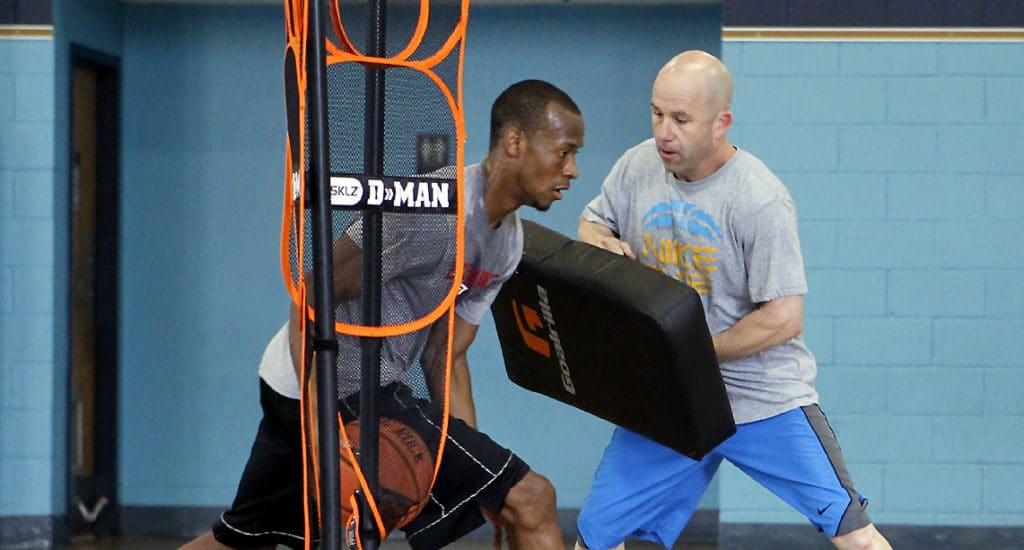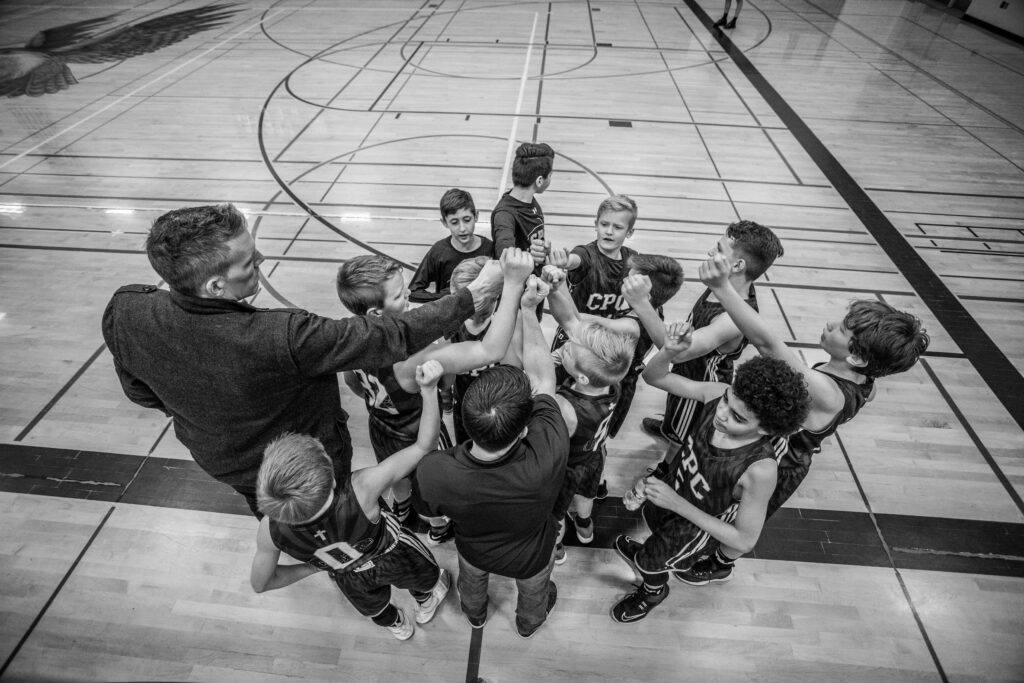
Creating a Player Development Program: Maximizing Your Player’s Skills
A well-structured player development program is essential for fostering growth and improving performance in basketball players. Such a program not only enhances individual skills but also contributes to the overall success of the team. This article outlines key steps and strategies for creating an effective player development program.

1. Assess Individual Player Needs
Understanding each player’s strengths, weaknesses, and areas for improvement is the foundation of a successful development program.
Conduct Skill Assessments
Regularly assess players’ skills through drills, practice sessions, and games. Identify areas where players excel and where they need additional focus.
- Skill Assessments: Utilize various drills that evaluate dribbling, shooting, passing, and defensive capabilities. Observe how players perform under pressure during scrimmages.
- Feedback Loop: Encourage players to self-reflect on their performances, which can help them articulate their own strengths and weaknesses.
Set Individual Goals
Work with each player to set specific, measurable, and achievable goals. These goals should address their weaknesses and build on their strengths.
- SMART Goals: Ensure that goals are Specific, Measurable, Achievable, Relevant, and Time-bound. For instance, a player might aim to improve their free throw percentage from 60% to 75% over the next two months.
- Regular Check-Ins: Schedule meetings with players to review their goals, discuss progress, and adjust objectives as necessary.

2. Develop a Comprehensive Skill Training Plan
A structured training plan is essential for systematic skill development.
Create Skill Development Drills
Design drills that target different aspects of basketball skills, such as shooting, dribbling, passing, and defense. Ensure that these drills are age-appropriate and tailored to each player’s level.
- Variety of Drills: Include individual drills, partner drills, and team drills. For example, shooting drills can involve different types of shots—free throws, jump shots, and layups.
- Incorporate Game Situations: Use drills that replicate game situations to ensure skills are developed in a context that reflects actual play.
Incorporate Progressive Training
Implement a progressive training approach where skills are developed from basic to advanced levels. Gradually increase the complexity of drills and exercises as players improve.
- Step-by-Step Approach: Start with fundamental skills and progressively introduce more complex techniques. For example, begin with stationary shooting and progress to shooting off the dribble.
- Adaptability: Be flexible and willing to adjust training intensity based on each player’s development pace.
3. Include Physical Conditioning and Injury Prevention
Physical conditioning is vital for enhancing performance and preventing injuries.
Design Conditioning Workouts
Incorporate strength, agility, and endurance training into the development program. Tailor workouts to improve players’ physical attributes and overall fitness.
- Conditioning Drills: Utilize exercises like sprints, agility ladders, and resistance training to build physical capabilities that translate to on-court performance.
- Fitness Assessments: Regularly assess players’ fitness levels and adjust conditioning programs accordingly.
Focus on Injury Prevention
Include exercises and stretches that help prevent common basketball injuries. Educate players on proper techniques and the importance of warm-ups and cool-downs.
- Injury Awareness: Teach players about common injuries, their causes, and prevention strategies. Incorporate mobility and flexibility exercises into training.
- Regular Health Checks: Monitor players for signs of fatigue or overtraining and adapt training plans to prioritize their health.

4. Emphasize Mental and Emotional Development
Mental and emotional resilience are crucial for player success.
Implement Mental Training
Include mental training techniques such as visualization, goal setting, and relaxation exercises. Help players develop focus, confidence, and the ability to handle pressure.
- Visualization Techniques: Encourage players to visualize successful plays, free throws, or defensive stops. This mental rehearsal can enhance confidence and reduce anxiety.
- Mindfulness Practices: Incorporate mindfulness techniques to help players stay present and focused during high-pressure situations.
Support Emotional Well-being
Foster a positive environment where players feel supported and encouraged. Address any emotional or psychological challenges players may face and provide appropriate resources.
- Open Dialogue: Create a culture of openness where players feel comfortable discussing their mental health and emotional challenges.
- Professional Resources: Provide access to mental health resources or sports psychologists if needed.
5. Encourage Game Awareness and IQ
A high basketball IQ contributes significantly to a player’s effectiveness on the court.
Teach Game Concepts
Educate players on game concepts such as spacing, timing, and decision-making. Use video analysis to illustrate these concepts and help players understand their application in games.
- Interactive Learning: Use interactive sessions where players analyze game footage together and discuss the decisions made during various plays.
- Situation-Based Learning: Run drills that emphasize specific game situations to develop players’ understanding of when and how to apply learned concepts.
Promote Situational Awareness
Develop drills and scenarios that simulate game situations. This helps players learn to read plays, anticipate opponents’ moves, and make informed decisions during games.
- Real-World Application: Incorporate game-like scenarios into practice, forcing players to make quick decisions based on the unfolding action.
- Encourage Critical Thinking: Challenge players to evaluate different options during practice drills to enhance their game-time decision-making.

6. Provide Regular Feedback and Evaluation
Regular feedback is essential for tracking progress and making necessary adjustments.
Conduct Regular Evaluations
Schedule periodic evaluations to assess players’ progress toward their goals. Provide constructive feedback and celebrate improvements and achievements.
- Structured Reviews: Hold structured review sessions after practices and games to discuss what worked well and what needs improvement.
- Celebrate Success: Recognize players’ improvements, no matter how small, to foster a growth mindset and motivation.
Adjust Training Plans
Based on evaluations, adjust training plans and goals as needed. Ensure that the development program remains relevant and effective in meeting players’ needs.
- Dynamic Planning: Be willing to change training methods or goals based on performance trends and individual player feedback.
- Collaborative Goal Setting: Involve players in the goal-setting process, making them active participants in their development journey.
7. Foster a Supportive Coaching Environment
A supportive coaching environment enhances player development.
Encourage Open Communication
Maintain open lines of communication with players and their families. Address any concerns and keep them informed about the development program and players’ progress.
- Parent Meetings: Hold regular meetings with parents to keep them informed about the program and how they can support their child’s development.
- Feedback Channels: Create channels for players to provide feedback on practices and coaching methods, reinforcing the idea that their voices matter.
Promote a Positive Culture
Create a positive and inclusive culture where players feel motivated and engaged. Encourage teamwork, respect, and a strong work ethic.
- Team Building: Incorporate team-building activities that strengthen relationships and promote a sense of belonging among players.
- Values-Based Coaching: Emphasize core values such as respect, effort, and teamwork in all interactions, both on and off the court.

8. Utilize Technology and Tools
Modern technology can enhance player development programs.
Incorporate Technology
Use technology such as video analysis software and performance tracking tools to monitor progress and provide detailed feedback. These tools can offer valuable insights into players’ performance and areas for improvement.
- Performance Dashboards: Implement systems that allow you to track various performance metrics in real-time, making it easier to provide immediate feedback.
- Interactive Apps: Utilize apps that facilitate skill development drills and allow players to track their own progress.
Leverage Online Resources
Utilize online resources and platforms for drills, training programs, and coaching tips. These resources can complement your development program and provide additional support.
- Webinars and Online Courses: Encourage coaches and players to participate in webinars or online courses to enhance their understanding of coaching techniques and player development.
- Community Forums: Join online forums or communities where coaches can share resources and experiences related to player development.
Creating a Player Development Program Conclusion
Creating a player development program involves assessing individual needs, developing a comprehensive skill training plan, and including physical conditioning and mental training.
Emphasizing game awareness, providing regular feedback, and fostering a supportive environment are also key to the program’s success. Utilizing technology and tools can further enhance the program and support players’ growth.



